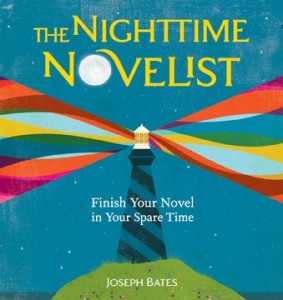When do you write? Do you have a schedule, or are you a “snatcher of time”? Mornings? Evenings? When the kids are in bed, or before they’re off to school?
We talk here often, in posts and in the comments, about day jobs and family life and finding time to write. Let’s face it, most writers do not have the luxury of lounging on a balcony overlooking the ocean, waiting for inspiration to hit them as the butler delivers another Piña Colada. (During this economic downturn, I had to let my butler go).
We talk here often, in posts and in the comments, about day jobs and family life and finding time to write. Let’s face it, most writers do not have the luxury of lounging on a balcony overlooking the ocean, waiting for inspiration to hit them as the butler delivers another Piña Colada. (During this economic downturn, I had to let my butler go).
So, yeah, it can be a struggle not only to find time to write, but to know exactly what to do with the time you find.
That’s why it’s a pleasure to recommend a new book from Writer’s Digest Books, The Nighttime Novelist. (I need to mention that WD publishes my own writing books as well, but I would have recommended this tome regardless. You’ll just have to trust me on this).
The Nighttime Novelist is by Joseph Bates, who teaches creative writing at Miami University in Oxford, Ohio. It’s laid out in a logical order, from developing ideas all the way to the revision process. So it’s possible to go from beginning to end and write an entire novel using the tips in this book.
The Nighttime Novelist is by Joseph Bates, who teaches creative writing at Miami University in Oxford, Ohio. It’s laid out in a logical order, from developing ideas all the way to the revision process. So it’s possible to go from beginning to end and write an entire novel using the tips in this book.
But the greatest benefit is that you can go to it for help at any point in your story.
There are three main sections: Beginnings, Middles and Endings. Each section is further broken down into areas like “Developing Initial Ideas” and “Crafting & Maintaining Suspense.” There are subsections, too, color coded as Technique, Hurdles and Going Deeper. So you may be having a problem, say, with one of your characters being flat. In the section called “Character Concepting” you’ll find a Hurdle called “Rounding Flat Characters.” Here you’ll find two pages of tips to solve that particular problem.
Or maybe your plans for Act Two seem a little forced. You can turn to Going Deeper in the “Middles” section and find advice on “Leaving Room for Organic Story Growth.”
There are three main sections: Beginnings, Middles and Endings. Each section is further broken down into areas like “Developing Initial Ideas” and “Crafting & Maintaining Suspense.” There are subsections, too, color coded as Technique, Hurdles and Going Deeper. So you may be having a problem, say, with one of your characters being flat. In the section called “Character Concepting” you’ll find a Hurdle called “Rounding Flat Characters.” Here you’ll find two pages of tips to solve that particular problem.
Or maybe your plans for Act Two seem a little forced. You can turn to Going Deeper in the “Middles” section and find advice on “Leaving Room for Organic Story Growth.”
Each section is relatively brief, so you don’t have to wade through a lot of generalized theory. I like to teach nuts and bolts, actual techniques that work. This is the approach Bates takes as well. It’s like having a reliable writing coach available for you any time of the day or night.
And that’s really the point here. No matter when you write, or how long you have to do it, you can use this guide to give you a little jolt of creativity or direction when you need it.
The book also includes 27 worksheets, which are helpful for systematically filling out your own material. Giving focused thought to your story through these worksheets will help you fill in gaps you might have missed.
Here’s a sampling of some of the sections:
· Finding an idea that’s “never been done before.”
· Developing your supporting cast.
· Finding your subplots.
· Finding your voice.
· The elements of effective description.
· The shape and function of the second act.
· Raising tension through dialogue.
· Keeping your scenes kinetic.
And my favorite:
· If you and your story could arm wrestle, who would win?
I’m all for writers getting any help they can, and having The Nighttime Novelist on your desk as a quick reference will definitely do that for you. And as I said at the outset, if you want to use it as a guide to writing a novel for which you only have an idea, you can follow it step-by-step to get to the finish line.
So when is your time to write?
And what do you do when you reach a hurdle in your manuscript? You come to a “problem” you’re not sure how to solve. What’s your strategy for getting over that obstacle?
And what do you do when you reach a hurdle in your manuscript? You come to a “problem” you’re not sure how to solve. What’s your strategy for getting over that obstacle?

